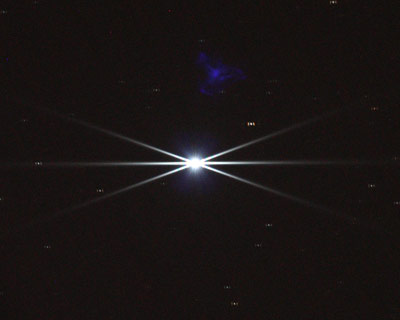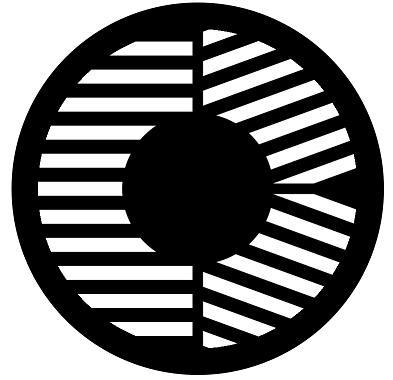The Bahtinov Mask
A Marvellous New Low-Cost Diffraction Focuser
This is a REVOLUTIONARY improvement upon the traditional Hartmann Mask. Thankyou
Mr Patel Bahtinov from the USSR !
On a scale 1 to 10 if you say that a Hartmann Mask
scores 5 for effectiveness then a Bahtinov Mask scores around 9. It is right up
there rivalling expensive software focussing tools like FWHM (eg. in MaxDSLR) and fiddly
things like Ronchi Gratings, Knife-edges, etc.. Bang for dollar (i.e. for zero
dollars...) it is great value - and you can make one at home with simple materials within
a few hours.
It is so effective that I have for the moment discarded my use of FWHM software
focusing (in MaxDSLR) while I fully evaluate the Bahtinov mask.
- The reason I've been so keen to adopt the Bahtinov Mask is that it takes about 5 minutes
(sometimes even less) to get very good focus even when the seeing is bad. Messing
about with FWHM might take over half an hour - especially in bad seeing.
With most focusing aids (Including FWHM) you never know when you've not yet arrived at
focus or when you've actually gone past it.
- Both the Hartmann and Bahtinov masks are easy to make. Both of them let you do
rapid coarse focusing (i.e. getting close to the approximate focus quickly).
-
- Unfortunately with the Hartmann Mask the diverged focusing dots merge into a single dot
too early to be a precise measure of focus. Due to atmospheric disturbance and tube
currents (seeing) the dots dance about on top of one another all through the most critical
part of your focusing activity. It would be good if you could tell when the dots
pass through their common mid-point but you can't. The dots converge into a dancing
central blob quite a way before focus and then suddenly they diverge again into separate
dots once you have gone away past focus. The dots appear to be merged and are
indistinguishable from each other through quite a long range of focuser movement. As
a result you'll know that you're getting close to focus, but you won't know when you've
got there. This makes the Hartmann Mask very coarse. You can move your
focus wheels quite a long way and not notice a difference in the width or the position of
the merged central dots. The best that you can hope for is to try and estimate the
"middle" between both of the obvious sides of focus.
|


|
The Bahtinov Mask, on the other hand, lets you get a LOT closer to the
perfect focus. Just like a Hartmann Mask it is intuive to use, something moves in
the image when you move the focuser. The difference is that the Bahtinov Mask is
more accurate where it matters most - ie. when you are close to the critical focus
point.
As you move the focus wheel the central diffraction bar moves across the centre of the
X. When you are near critical focus the central diffraction bar crosses the centre
of the "X" diffaction pattern.
Now, here's where it matters most ------ when you are in the approximate region of
critical focus just a small shift of the focus wheel results in a noticeable change in the
position of the central diffraction bar. The Bahtinov Mask is thus more sensitive
and gets you closer to critical focus than does a Hartmann Mask.
The Bahtinov Mask won't give you perfect focus on a fast (f/4) telescope.
It is too coarse a tool for that, but it is more accurate than a Hartmann Mask, and
judging from experience it rivals what I can do with FWHM software. It is also
quick. And cheap.
Email: bill *at* zodiaclight: com
All images and content of this website are copyright (c)2005-2008 Bill
Christie. All rights reserved.
-
|


